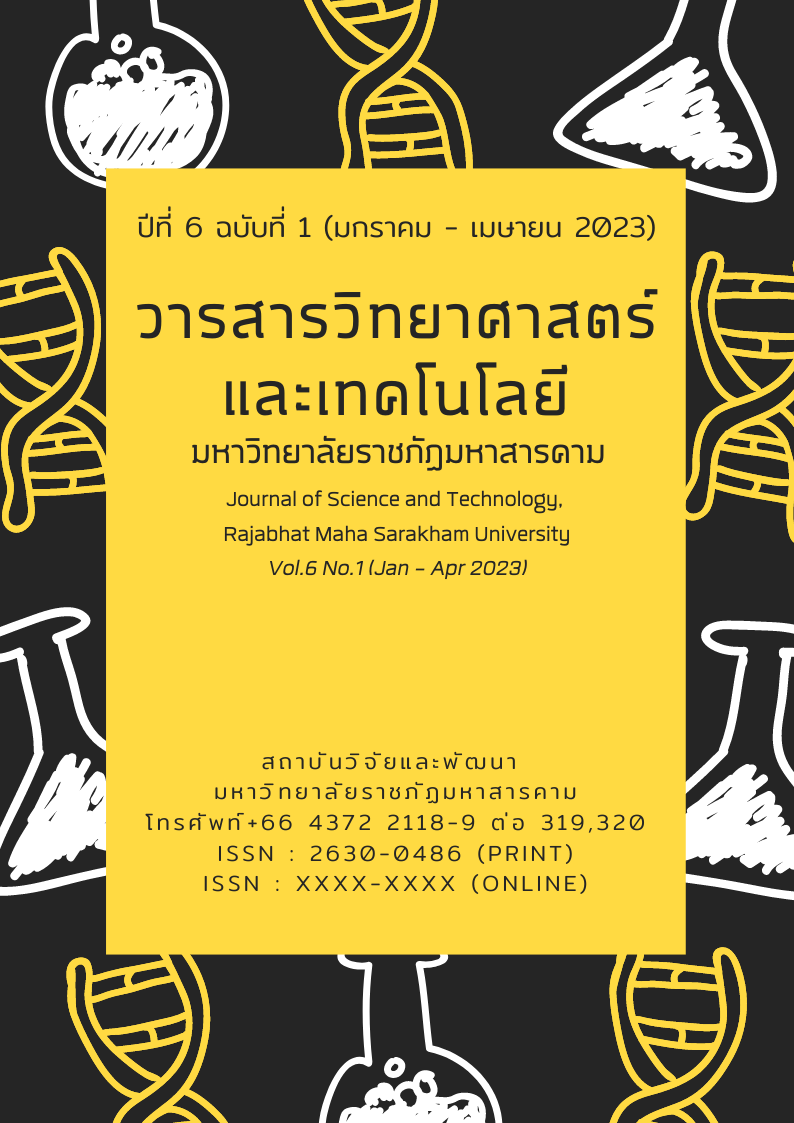Study on Biogas Production from Essential Oil Distillation Waste Basil by using the Continuous Stirred Tank Reactor (CSTR) combined with IOT Monitoring System
Keywords:
Essential Oil, Biogas, Continuous Stirred Tank Reactor (CSTR), Internet of Thing (IOT)Abstract
The objective of this research is to study on biogas production from essential oil distillation waste basil by using the continuous stirred tank reactor (CSTR) combined with IOT monitoring system. The CSTR reactor design consisted of six main parts: 1) the mixing tank that its function was a material preparation tank to be used for biogas production, 2) the suction pump which serves the prepared material in the mixing tank up to the reactor tank 3) CSTR reactor which inside the tank is equipped with a stirrer to increase the efficiency of the biogas production process, 4) the biogas measurement and sampling system, 5) IOT monitoring system and 6) biogas tank. The CSTR digester test found that at the optimum OLR3 (9 kgVS/m3-day), produce the highest amount of biogas at 121.56 L/day (cumulative biogas of 2416 L), the biogas has a methane content of 15.89 – 51.45%.
References
Afif, R. A., & Linke, B. (2019). Biogas production from three-phase olive mill solid waste
in lab-scale continuously stirred tank reactor. Energy, 171, 1046-1052.
Adney, W. S., Rivard, C. J., Shiang, M. & ME, H. (1991). Anaerobic digestion of
lignocellulosic biomass and wastes - Cellulases and related enzymes. Applied Biochemistry and Biotechnology, 30(2), 165-183.
Boe, K., & Angelidaki, I. (2009). Serial CSTR digester configuration for improving biogas
production from manure. Water research, 43, 166-172.
Cioabla, A. E., Ionel, l., Dumitrel, G. A., & Popescu, F. (2012). Comparative study on factors affecting anaerobic digestion of agricultural vegetal residues. Biotechnology for Biofuels, 5(39), 1-9.
Feng, L., Ward, A. J., Guixé, P. G., Moset, V., & Moller, H.B. (2018). Flexible biogas production by pulse feeding maize silage or briquetted meadow grass into continuous stirred tank reactors. Biosystems Engineering, 174, 239-248.
Gerardi, M. H. (2003). The microbiology of anaerobic digesters. Handbook, New Jersey:
John Wiley & Sons,Inc.
Liu, Y., Wachemoa, A. C., Yuan, H., & Li, X. (2019). Anaerobic digestion performance and microbial community structure of corn stover in three-stage continuously stirred tank reactors. Bioresource Technology, 287, 1-10.
Mamo, T. Z., Dutta, A., & Jabasingh, S. A. (2019). Start-up of a pilot scale anaerobic reactor for the biogas production from the pineapple processing industries of Belgium. Renewable Energy, 134, 241-246.



